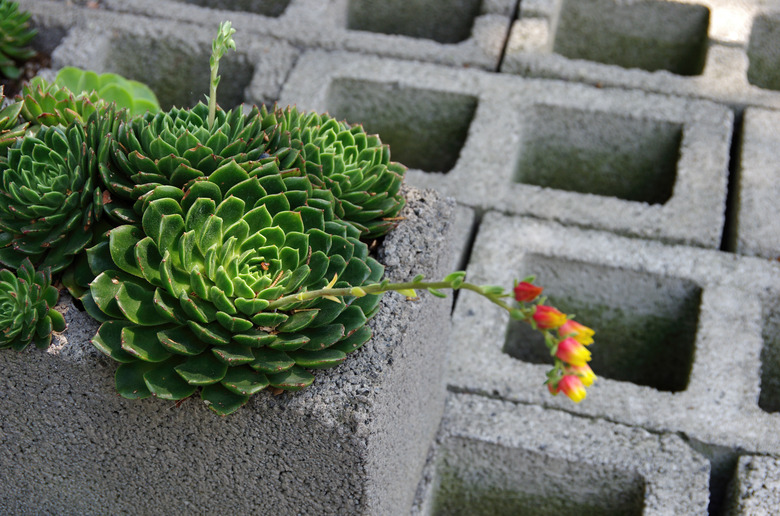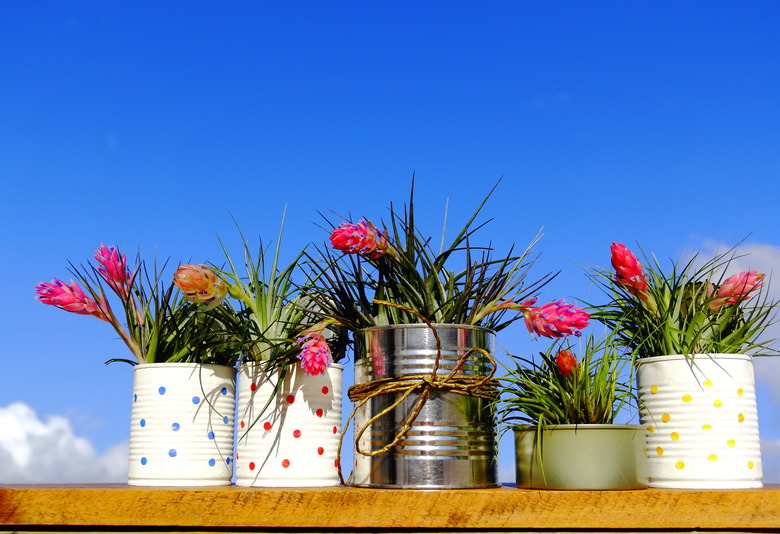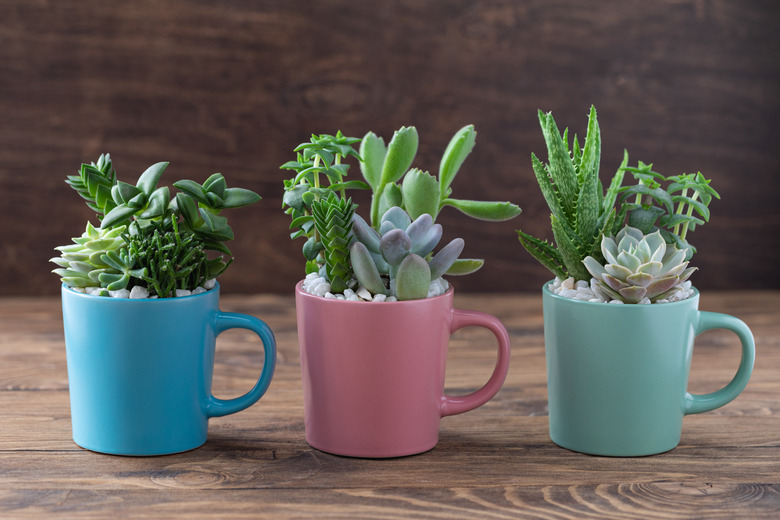Container Gardening: Ideas And Tips For Using Upcycled Containers
We may receive a commission on purchases made from links.
Container gardening involves a lot less effort than creating a conventional flower or vegetable garden in the backyard, and it's such a versatile gardening method that anyone can do it, even someone on the 21st floor of an apartment complex — or someone who just wants to spruce up their outdoor space. All you need is a container, a sunny spot and some good potting soil in which to plant your flowers, herbs or vegetables. Pretty much any vessel that can hold soil qualifies as a container as long as it has drainage holes, so making your own is one of the simplest DIY projects you can undertake as well as one with the most creative possibilities.
Of course, some containers are better than others, and some are more appropriate for the types of plants you want to grow than others. Size matters; planting herbs in an oversized pot could put them at a disadvantage when weeds claim the excess real estate, and a small tree probably won't thrive in a container that doesn't have enough room for the roots to spread out. Materials also matter; some materials provide better insulation than others, some are porous and allow water to evaporate more quickly and some are less prone to deterioration.
A typical DIY container garden usually features a selection of store-bought garden containers, found objects that have been converted into containers and a few containers assembled from raw materials. If you're about to embark on a container gardening project, you'll find no shortage of ideas on the internet for your own DIY container, and you'll no doubt have plenty of ideas of your own. The key is to remember that a good container is one in which the chosen plants can thrive, and it doesn't hurt if it also looks quirky, funky or beautiful depending on the type of garden and its design.
Materials for Container Gardening
Materials for Container Gardening
The pots you find at garden centers are usually made from clay, plastic or wood, but these are by no means the only materials you can use because anything that can hold soil qualifies. People make containers out of porcelain sinks, metal buckets, cement cinder blocks and even canvas shoe racks. Each material has its pros and cons.
- Clay is porous and allows roots to breathe, but it also allows water to evaporate, so you'll probably have to water frequently. Clay pots are sturdy and provide some heat insulation, but they're breakable.
- Black plastic pots are a lightweight and inexpensive option. They hold water well, resist deterioration and are easy to move around, but they get hot in the sun. The plastic often comes from recycled sources and may contain harmful impurities that can leach into the soil, however, making them a less than ideal choice for long-term use.
- Wood is porous and attractive, but even rot-resistant varieties like redwood and cedar have a hard time standing up to constant exposure to moist soil. If you're going to make a wood planter box or window box, give it a plastic or metal liner to make it last longer.
- Porcelain is durable and provides good insulation for roots, but it's more difficult to drill through to make drainage holes (you'll have to use a certain type of drill bit, generally with a diamond tip), so it's easier to use a pre-molded vessel with a preexisting drainage opening,
like a sink or toilet. - Concrete is porous and provides good insulation, but it's heavy. If you make a DIY container from concrete, choose a good location because it will probably be there to stay.
- Metal is a lightweight material with little insulation value that can get extremely hot in the sun. Metal containers aren't good for long-term use because they rust.
- Fabric containers, such as canvas and felt ones, typically come premade and are surprisingly durable. Canvas shoe racks are great for growing a herb garden right in the kitchen, while a 20-gallon felt pot is large enough for growing a container vegetable or a small tree.
- Polyresin pots are molded to look like clay or stone and are more lightweight and inexpensive. They are nonporous and provide good insulation.
Size the Pot Appropriately
Size the Pot Appropriately
Store-bought containers are typically 6 to 8 inches deep, which is fine for growing some herbs and easy-to-grow flowers, but if you're growing root veggies or anything with a deep taproot, a depth between 12 and 15 inches or even deeper is more appropriate. On the other hand, succulents have shallow root systems that can thrive in only a few inches of soil, so they would be good candidates for growing in a converted bird bath or tool box.
There are no limits on container width, breadth or diameter, and you can play with gardening ideas by using pots of varying dimensions. For example, you could construct a few large pots for growing veggies and intersperse small containers holding single flowers or groups of flowers in the small spaces between the larger containers. Complete the picture with hanging baskets with flowering vines or some of the many vegetables that will grow there, including cucumbers, cherry tomatoes or lettuce.
Some Offbeat Container Gardening Ideas
Some Offbeat Container Gardening Ideas
Do you have a bunch of old cinder blocks left over from a building project and cluttering up the garage? Glue landscape fabric to the bottoms, stack them next to the house and plant herbs in the exposed holes to make a multitiered herb garden. A used 5-gallon bucket also makes a great planting pot even if it isn't the most beautiful container you can find. Just be sure to drill drainage holes in the bottom before you fill it with potting mix.
You can do container gardening in just about any vessel that will hold soil, including a hollowed-out tree stump, a large sea shell (or a small one), an old basket or even an abandoned boat. Just be sure that whatever container you use hasn't been used in the past to hold chemicals that will poison your plants. Herbicide containers are not great choices for growing houseplants. In fact, when converting any vessel into a garden container, you should first clean it with soap and water and sterilize it with a 10 percent bleach solution for at least 10 minutes.
Making Your Own DIY Containers
Making Your Own DIY Containers
Whenever you find interesting vessels with solid bottoms that you want to use for container gardening, you have to make drainage holes, and that usually leaves out materials that can't be drilled, such as glass, heavy metal and thick concrete. The holes should be sized according to the object, and in general, the smaller the holes and the larger the container, the more holes you need to ensure proper drainage.
If you look on the bottom of a store-bought terra-cotta pot, you'll see a single 1/2- to 3/4-inch hole in the center, and that's fine because the shape of the pot directs water to the center. Some containers, such as a 2 x 4-foot window box, need several holes this size or even a little bigger and spaced in such a way to drain all the soil. If you're converting a small vessel, such as an old pair of rubber boots, you'll want 1/4-inch or smaller holes spaced evenly around the sole.
If you have to glue components together to make your garden container, be sure to use waterproof glue. The best choice is two-part epoxy, but polyurethane glue also works. When fastening pieces of wood together to make a planter box or window box, use galvanized nails or weatherproof deck screws made from enameled steel or stainless steel. It doesn't take long for wooden garden containers to fall apart if you use the wrong fasteners.


